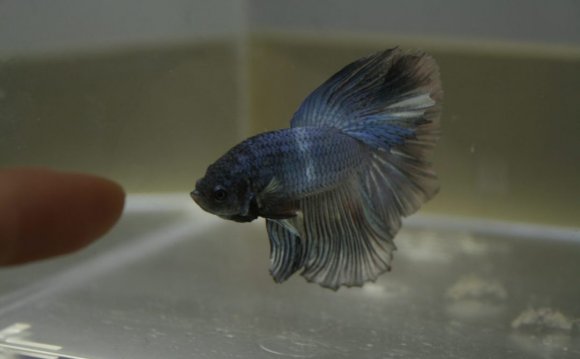
Betta fish, otherwise known as Siamese fighting fish, are hardy fish that are easy to care for and will often live for more than three years if you follow the proper care instructions. By taking your role as caregiver seriously and providing your pet with everything it needs to live a healthy life, your betta will remain vibrantly colorful and happy for a very long time.
Caring for Betta Fish
Before you take on the responsibility of owning a betta fish, it's a good idea to learn a little about where this fish comes from, what its natural habitat is like and other important information that will help you provide the best level of care for your new pet.
Betta fish mainly originated in Thailand, but they can also be found in the shallow, warm waters of Vietnam, Malaysia, Indonesia and in some parts of China. They prefer places where the water is clean, warm and slow moving, so they are often found in the region's rice paddies as well.
Establishing the Ideal Betta Tank
Many betta owners keep these colorful fish in small fish bowls or cups because the fish are used to very shallow waters in their natural habitat, but one thing nearly all of the owners forget is that bettas thrive best in warm water. If the tank's water temperature dips below 75 degrees, the betta fish will quickly become dispirited, lethargic and perhaps ill. Maintaining a water temperature of 80 degrees Fahrenheit, however, will improve the fish's health and well-being.
Ideally, the water used in the fish tank should be soft with a pH that is either neutral (7.0) or slightly acidic (6.5).
Sizing the Betta Tank
Bettas are somewhat aggressive fish, but that doesn't mean your pet absolutely has to live alone. According to the vets at PetEducation.com, a male betta does best when he's the only betta in the tank, and although males tend to fight with other male and female bettas alike, you can add a single male betta to a community tank that contains other non-aggressive fish species. On the other hand, up to five betta females can be kept together in relative harmony in a community tank, often referred to as a "sorority." The problem of fighting comes into play whenever two males are placed in the same tank, or when a male betta is placed in a community tank with other aggressive fish, like cichlids, tetras or barbs. Male bettas should also not be kept in a community tank with colorful fish like guppies because the betta may attack the guppies thinking they are other small, bettas.
The tank's size will be determined by how many fish you plan to keep. A single betta will live happily in a tank or bowl, while three or four females will require a well-planted, 10-gallon tank to provide each one with enough personal territory. No matter what, the tank needs to be large enough so that the fish can swim around the tank comfortably without the threat of injury.
Betta Tank Accessories
Bettas love to have places to hide, especially female bettas, so providing a few hiding spots in the aquarium will help keep your fish happy. If you want to spruce the tank up with some plants, use only live plants or plants manufactured specifically for use with bettas since hard, plastic plants may injure the betta's beautiful yet delicate fins. You can also add aquarium gravel or sand to the bottom of the tank, but it is not completely necessary.
Bettas can survive without an air pump, unlike other aquarium fish, since they have a special respiratory organ called a labyrinth in addition to their gill systems. The labyrinth allows them to breathe very small amounts of air. This is why bettas can be kept in bowls without an air supply attached. That said, they still thrive better in an aerated tank as long as an airstone is used to diffuse the air flow.
Betta aquariums should have a cover of some type to prevent the fish from jumping out. The tank should also be filled no more than 80 percent full because when these fish get excited, they can leap out of the water sometimes as high as three inches above the surface. You want to make sure your pet doesn't hit the tank lid and injure himself.
Adding the Betta to the Tank
It is recommended to first acclimate the betta to the aquarium before you put the fish in it. This is done through a process called floating. Once the water is set up and conditioned in the tank, set the Betta (while still in the bag from the store) on top of the water. If you brought the Betta home in a cup, transfer the water and the fish to a plastic bag to do this.









